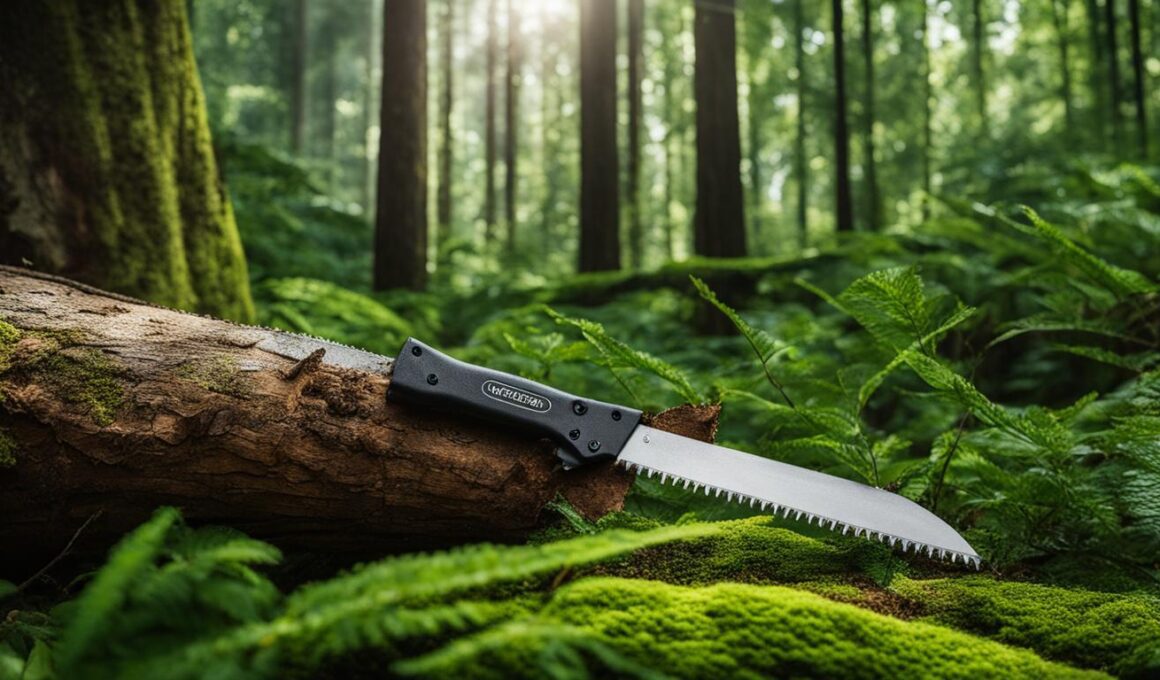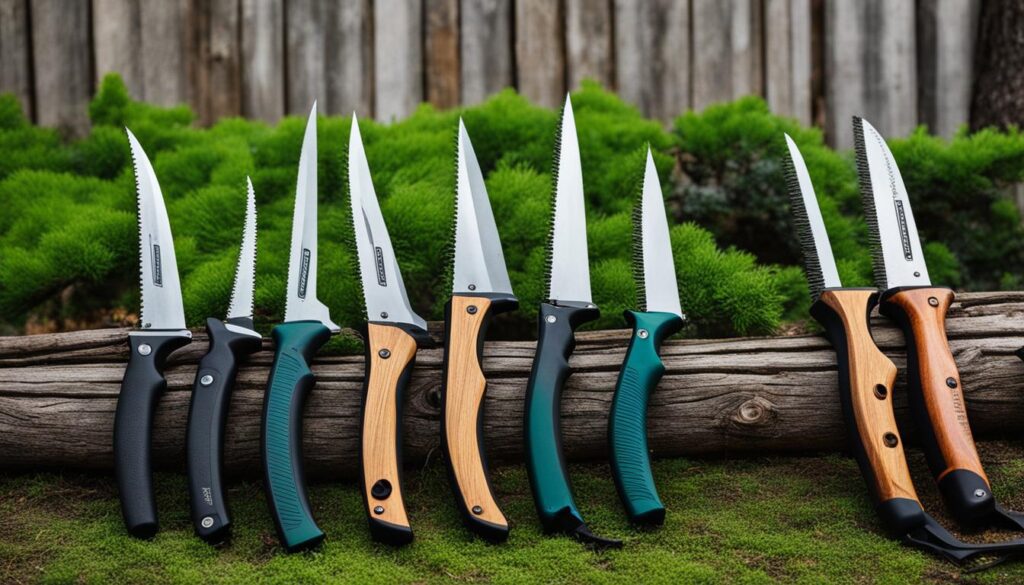If you’re looking for the best saw to cut trees, you’ve come to the right place. In this article, we will review the top choices available in the market. Whether you need a saw for pruning branches or cutting down large trees, we have options that will suit your needs.
Choosing the right saw is crucial to ensure efficiency and ease of use. We have carefully selected the best saws based on their features, performance, and customer reviews. Our goal is to provide you with the most accurate and helpful information so that you can make an informed decision.
From manual saws to cordless electric saws, our top picks cover a range of options. Each saw has its own unique features and advantages, allowing you to find the perfect fit for your tree cutting needs.
Stay tuned as we dive into the details of each saw, highlighting their strengths and weaknesses. By the end of this article, you will have all the information you need to choose the best saw for cutting trees.
Types of Pruning Saws for Cutting Trees
When it comes to cutting trees, choosing the right pruning saw is essential for efficient and precise pruning tasks. Pruning saws come in various types, each with its own advantages and suitability for different pruning requirements.
- Hand saws: Hand saws are the most commonly used type of pruning saws. They feature non-folding blades that can be straight or slightly curved, providing excellent control for precise cuts.
- Folding saws: If you need a compact and portable option, folding saws are a great choice. These saws have blades that lock into a straight position for cutting and fold for safe storage, making them convenient to carry around.
- Pole saws: For reaching higher branches, pole saws are specifically designed. They feature telescoping or attachable poles that allow for extended reach, enabling you to trim branches that are difficult to access.
- Powered saws: If you prefer minimal physical labor, powered saws are the way to go. Cordless electric or corded electric saws provide cutting power, making pruning tasks easier and faster.
Each type of pruning saw offers its own advantages and is suitable for different pruning tasks. Consider the nature of your pruning job and choose the appropriate saw to achieve the best results.
Next, we will explore the factors you should consider when selecting the right pruning saw for your needs.
Factors to Consider When Choosing a Pruning Saw
When selecting a pruning saw, there are several factors to consider that can help you choose the right tool for the job. By taking these factors into account, you can ensure that you have a saw that is efficient, durable, and comfortable to use.
- Blade length: The length of the blade is an important factor to consider when choosing a pruning saw. Longer blades are generally capable of cutting thicker branches, making them suitable for larger pruning tasks. However, it’s also important to consider the type of wood you’ll be cutting, as well as the blade material and tooth configuration, as they can significantly impact cutting efficiency.
- Blade material: The blade material plays a crucial role in the durability and performance of a pruning saw. It’s important to choose a blade that is made of durable and rust-resistant materials such as steel or high-carbon steel. Additionally, consider blades that are coated or plated for added protection against corrosion.
- Tooth configuration and count: The configuration and count of the teeth on the saw’s blade determine whether it cuts on the push or pull stroke. Additionally, the number of teeth per inch can affect the cutting speed and smoothness of the cut. Be sure to select a saw with tooth configuration and count that is suitable for your pruning needs.
- Handle design and comfort: The handle design and comfort of a pruning saw are crucial for reducing hand and arm fatigue during prolonged pruning tasks. Look for saws with ergonomic handles and pistol grips that provide better control and reduce strain.
- Weight: Consider the weight of the pruning saw when making your selection. Lighter saws are generally easier to maneuver, but they may require more downward pressure to cut through branches. Strike a balance between weight and cutting power for optimal performance.
- Safety features: Safety should always be a priority when using any type of saw. Look for saws that come with safety features such as blade locks, scabbards, and sheaths, as they help protect against accidental injuries and facilitate safe storage when the saw is not in use.
By considering these factors when choosing a pruning saw, you can ensure that you select the right tool for your specific pruning needs. Keep in mind that the best saw for you may vary depending on the type of pruning tasks you’ll be performing, so it’s important to evaluate your individual requirements.
Conclusion
In conclusion, when it comes to choosing the best saw to cut trees, it’s important to consider the specific pruning tasks and personal preferences. Among the top choices reviewed, the Corona S 7265D Razortooth Pruning Saw stands out as the best overall saw. Its durable teeth and efficient cutting design make it a reliable option for various cutting jobs. However, if ergonomic design is a priority, the Samurai Ichiban GC-330-LH Pruning Saw offers maximum control with its angled handle, rubber pistol grip, and finger notches, while also providing a scabbard for safe storage.
For those in need of a corded electric saw, the BLACK+DECKER Lopper Chain Pruning Saw proves to be an excellent choice. It delivers less effort compared to manual saws and offers affordability. On the other hand, if you’re looking to cut large branches, the Corona RS 7510D Pruning Saw with its ergonomic handle and chrome finish can handle the job effectively. For a hassle-free operation without the cords, the WORX WG320 Power Share JawSaw for Pruning is the way to go. Its cordless electric design, retractable blade, and metal teeth provide efficiency and stability while cutting.
When it comes to versatility, the DOCAZOO DocaPole GoSaw for Pruning is unmatched. With its multipurpose design and compatibility with all standard threaded poles, it offers flexibility for various pruning tasks. For those who value high-end quality, the SILKY Bigboy Pruning Saw provides a lightweight construction, sturdy rubber grip, and large cutting teeth. However, keep in mind that the blade is not completely covered when closed. Lastly, if you prefer a manual saw that can reach high branches, the Fiskars Fiskars Power-Lever Pruning Saw with its extendable fiberglass pole is a reliable option.
Choose the saw that suits your needs and enjoy efficient and easy tree cutting tasks. Whether you opt for the best overall saw, prioritize ergonomic design, need a corded or cordless electric saw, prefer versatility or high-end quality, or require a manual saw with an extendable pole, there is a top choice available to meet your specific pruning needs. Happy pruning!
Can the Best Saw for Cutting Trees also Safely Handle Black Locust Tree Thorns?
When choosing the best saw for cutting trees, understanding black locust thorns safety is essential. Look for a saw with durable, sharp blades and a sturdy handle to handle the tough thorns. Additionally, wearing protective gear, such as gloves and goggles, can further ensure safety while cutting black locust trees.
Can the Best Saw for Cutting Trees Also Be Used for Cutting Passion Fruit?
When looking for the best saw for cutting trees, it’s important to consider its versatility. A saw that can handle the demands of tree cutting may also be suitable for cutting passion fruit, a tropical delight. Always ensure the saw is sharp and capable of handling different tasks with precision.










